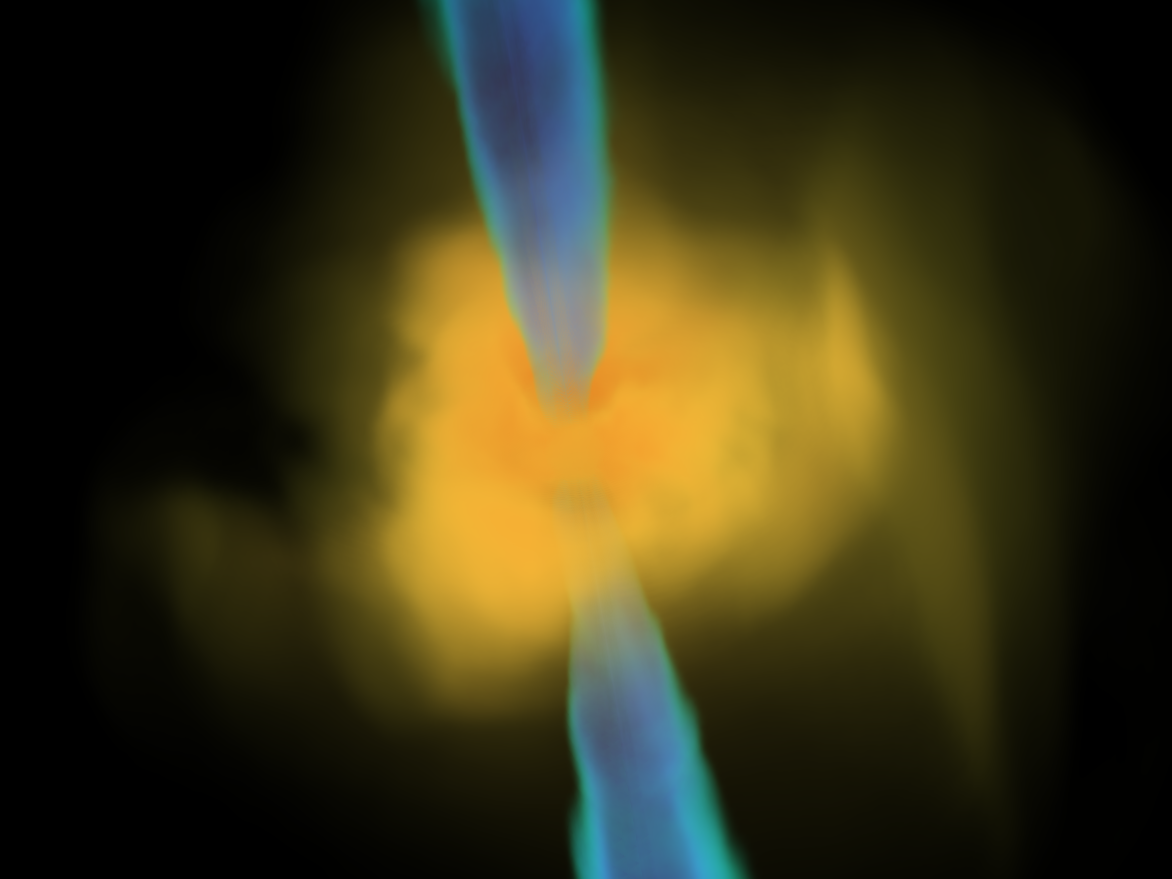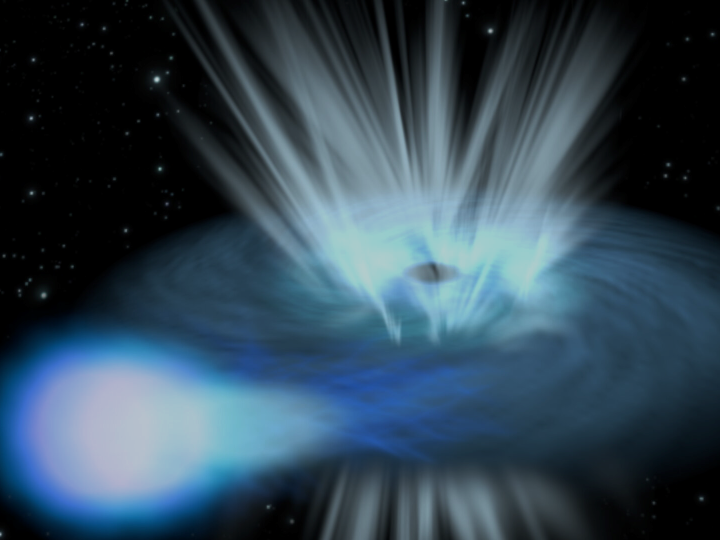Black holes are the most compact objects in the Universe, they are dark and invisible. However, when gas falls into black hole, accretion disks can form, gravitational energy turns into heat, and eventually producing bright emissions.
This makes black holes the central engines powering a wide range of luminous phenomena in the universe, such as some X-ray binaries (XRBs) in our Galaxy, active galactic nuclei (AGNs) and long gamma-Ray bursts (GRBs) observed from other galaxies, and very distant quasi-stellar objects (QSOs or quasars) formed in the early Universe.
The accretion process is very complex and stormy, to adress the challenging astrophysical cosmology and astrophysics problems, I do the numerical simulations on supercomputers, using general relativistic magnetohydrodynamics (GRMHD) to model the accretion flows, and perform radiative transfer simulations to reveal light spectra.
The following are some of my on-going projects to understand the mystery of black hole.

Launching Powerful Jets from Magnetized Low Angular Momentum Accretion
Gas accreting onto black hole usually carries angular momentum and forms a disk, the accretion process powers luminous emission, and energetic jet. However, some accreting gas may only carry tiny angular momentum. Can such accretion flow launch a powerful jet?

The mysterious origin og Ultra-luminous X-ray sources
It is widely believed that some of ultra-luminous X-ray sources (ULXs) could be accreting stellar mass black hole binary systems, where the black hole accretes at super-Eddington rate. This project is intend to be the first systematic studies to understand how the black hole proerpties and the accretion rate of magnetized accretion flows shapes the observation features.
Publications
[3] Kwan T. M., Dai L., Tchekhovskoy A. The Effects of Gas Angular Momentum on the Formation of Magnetically Arrested Disks and the Launching of Powerful Jets. The Astrophysical Journal Letters, 2023[ ApJL ] [ ArXiv ]
[2] Yang H., Yuan F., Kwan T. M., Dai L. The properties of wind and jet from a super-Eddington accretion flow around a supermassive black hole. Monthly Notices of the Royal Astronomical Society, 2023[MNRAS] [ ArXiv ]
[1] Thomsen L. L., Kwan T. M., Dai L., Wu S. & Ramirez-Ruiz E. Dynamical unification of tidal
disruption events. The Astrophysical Journal Letters, 2022 [ ApJL ] [ ArXiv ]
You shall find the most updated list from NASA NDS

